How to grow celery – for a bumper homegrown crop
Find out how to grow celery from seed to harvest, indoors or outdoors, with our complete guide
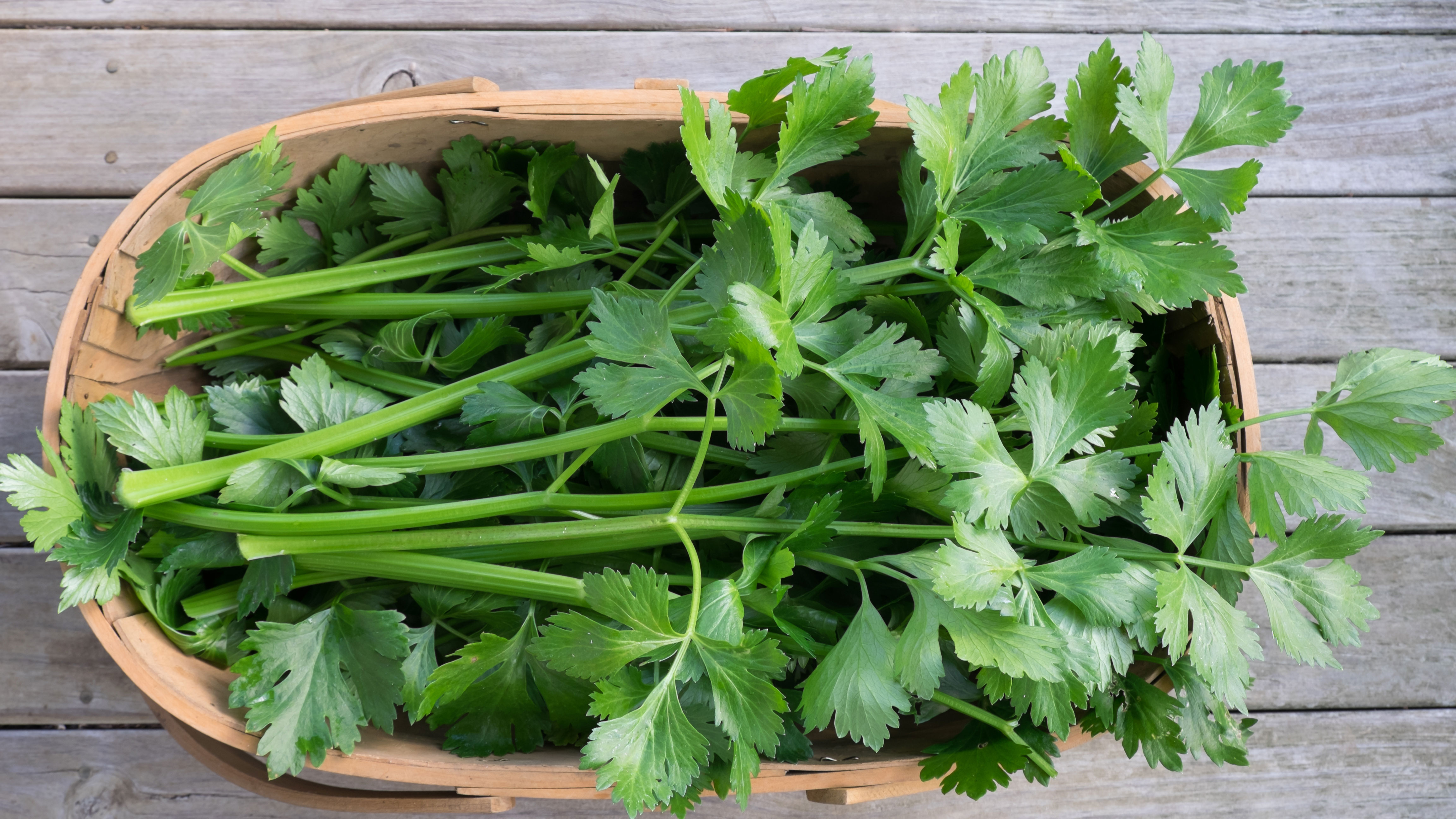
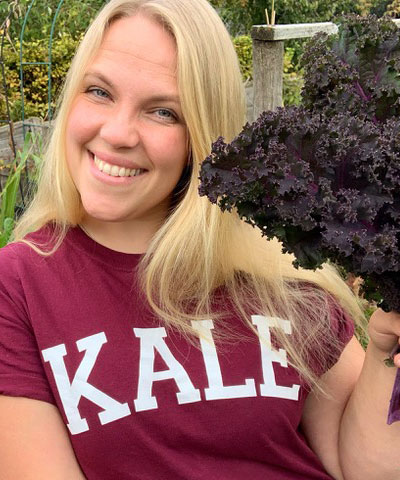
Once you know how to grow celery you will realize it is a great crop to try at home. You can experiment with different varieties, such as the beautiful Chinese pink celery, and raise a healthy crop indoors or outside in the garden.
Celery is easy to grow, but difficult to master. It is worth getting to grips with growing it successfully as part of your vegetable garden ideas, though, as it can be used for more than just eating raw as part of a salad or with dip. Use it to make celery salt and stock, it can be stewed and desiccated, and is great for adding deep flavors to dishes.
It is important to get the conditions right if you want to get those lovely tender stems that we recognize from the grocery store. Added to which, the leaves can also be used like herbs to flavor dishes.
How to grow celery
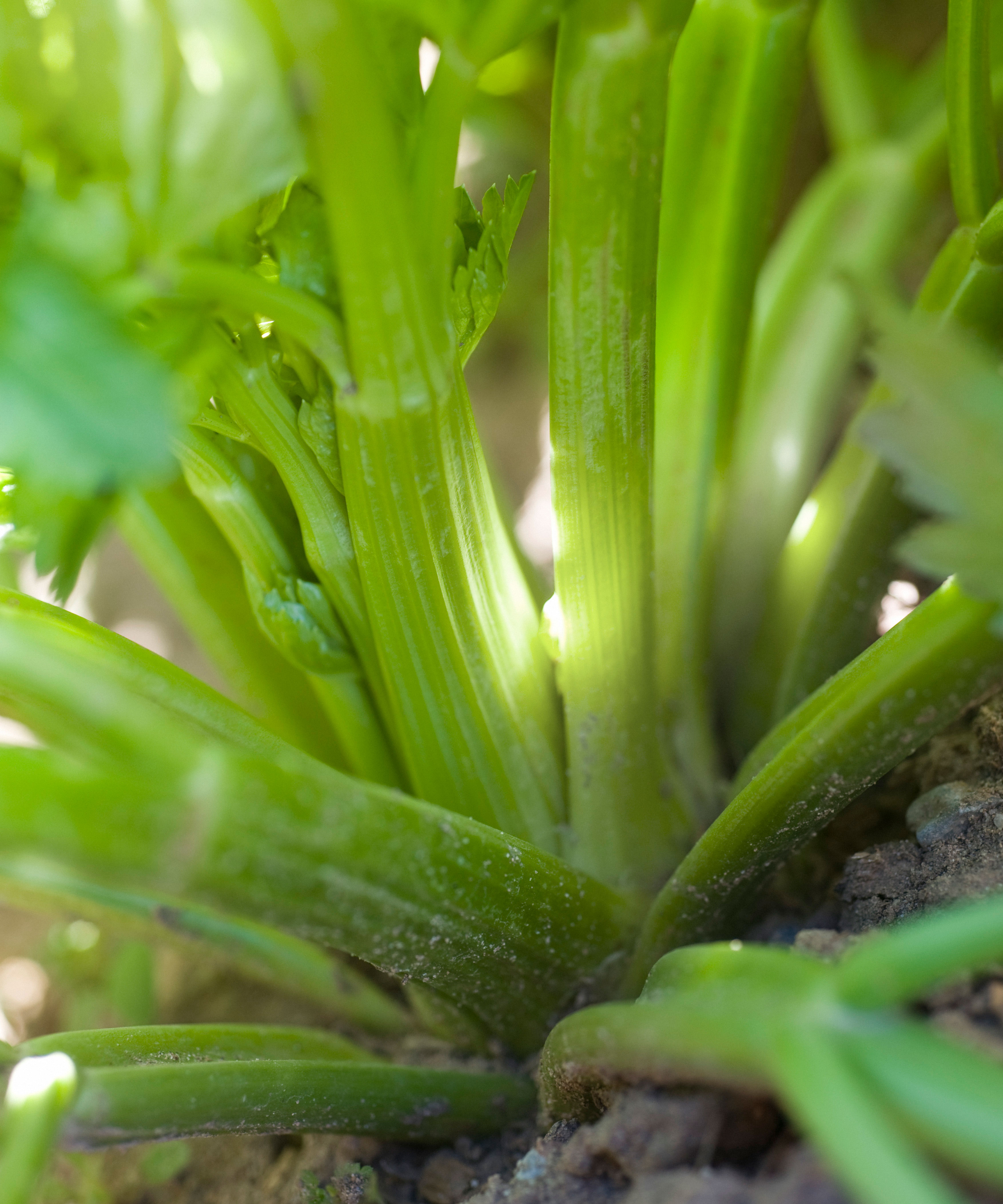
There are several different ways in which you can grow celery. The most common method is growing from seed, starting them off under cover when planning your gardening calendar, but you can also regrow celery from the end of a store-bought bunch.
To grow celery from a stalk, simply cut off the stems and leave an inch or two at the bottom where the stems join.
Then place this rosette, chopped end up, into a shallow dish of water and place it in a sunny spot on a windowsill, making sure to keep it well watered. Once it has roots, you can transplant it into your garden, or simply grow it on in a pot indoors as part of your indoor herb garden.
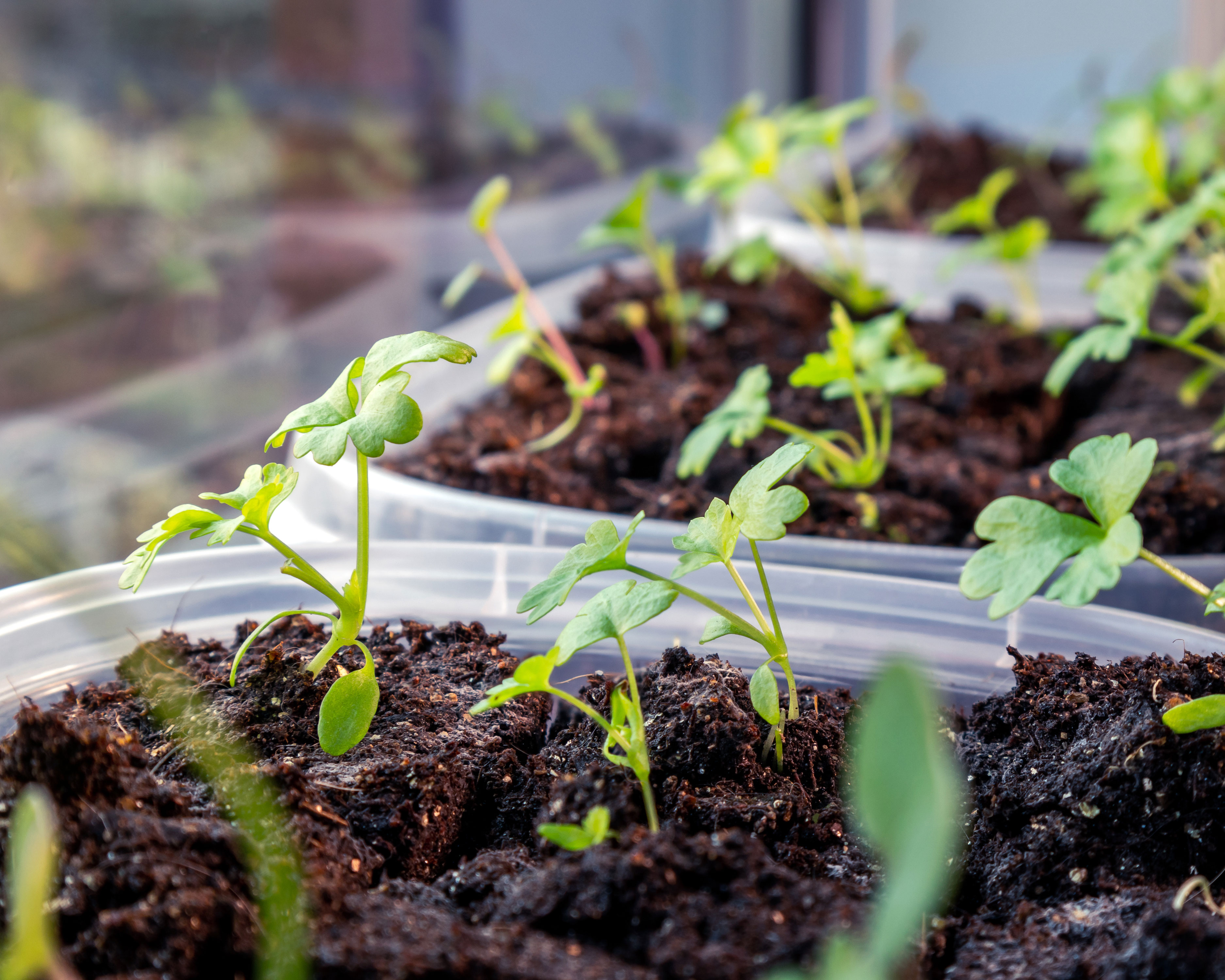
Growing celery from seed
Another way is to grow from seed. The benefit of knowing how to grow celery from seed is that it will produce a larger and more reliable crop, but this method is a little slower.
‘I usually grow celery in individual cells indoors before planting out in large pots or raised beds when it’s slightly warmer,’ says Sam Corfield, author of Sow Grow Gather.
Here is how to grow celery from seed:
- Start seeds 8 to 10 weeks before the last frost of spring
- When seedlings have a few leaves, transplant them into a garden bed or container, making sure you harden off the plants first
- Give them lots of water, and make sure that they do not dry out
- Give the plants some space; plant them around 10 inches apart
- Choose a sunny spot if you are in higher latitudes, or consider growing in partial shade in lower latitudes
- Plant in soil that is rich in organic matter and holds water well
- Harvest when the stems are the desired size
Where to grow celery
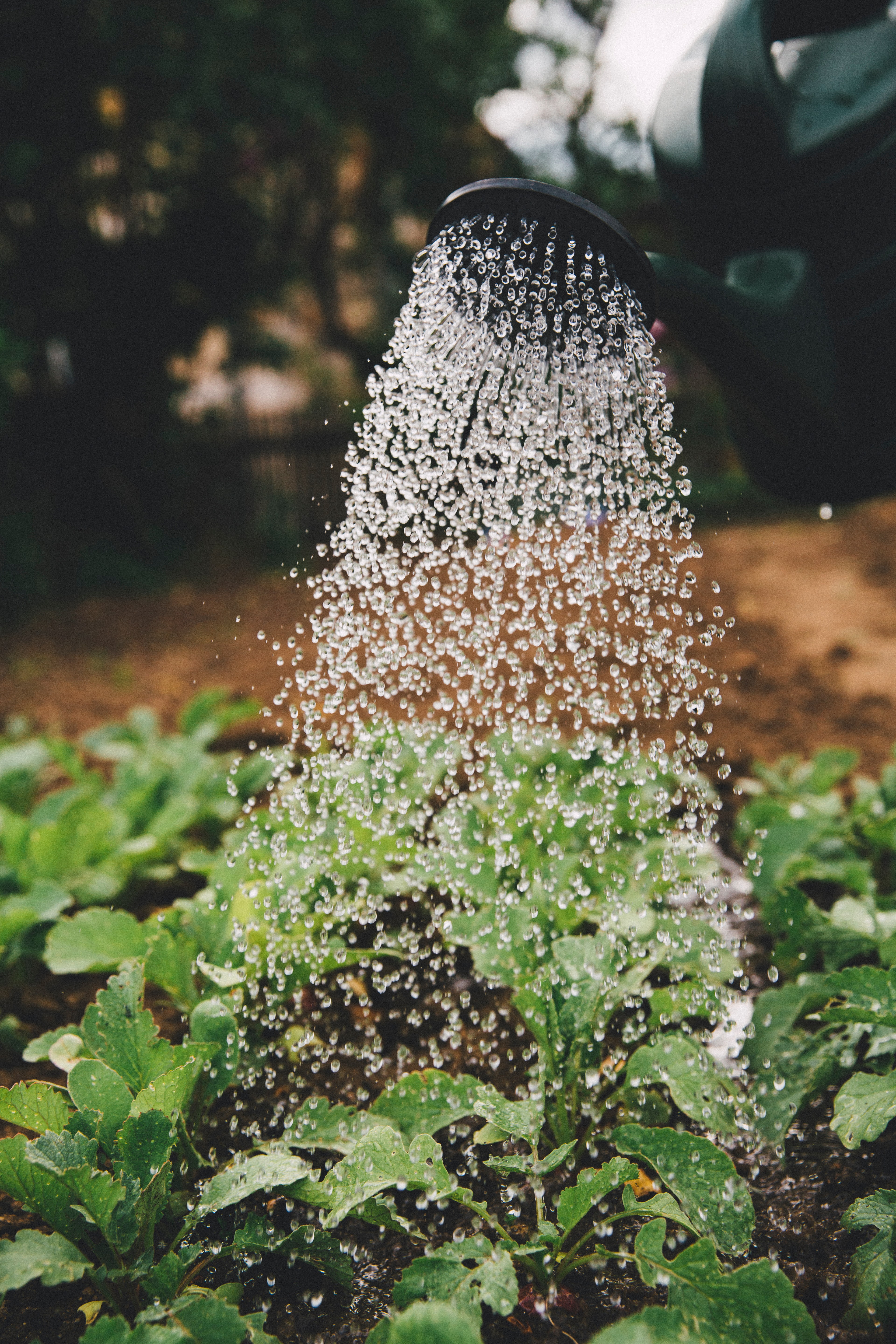
Celery is quite unique in its requirements. ‘It’s a kind of marshland plant,’ says Charles Dowding, no dig gardening expert.
Celery loves boggy, marshy ground, so if you have well-draining soil, Charles recommends to ‘water the celery plants every day just to keep that moisture level really high. It will repay you for that.'
‘If there is one thing you should never do when growing celery is let it dry out,' adds Sam Corfield.
How to grow celery in containers
Celery is an easy crop to grow in containers as part of your vegetable garden container ideas, the only challenge is ensuring that it doesn’t dry out. This can sometimes be easier when growing in a container, however, as you can water them from below using a tray, and potentially move the container to suit the plant’s needs throughout the year.
Make sure to choose a glazed pot as unglazed pots will wick away moisture too quickly. Your container should be at least 8 inches deep, and 10 inches wide for a single plant.
Select a potting compost that is rich in organic matter to help with moisture retention and water the plants regularly.
How to grow celery indoors
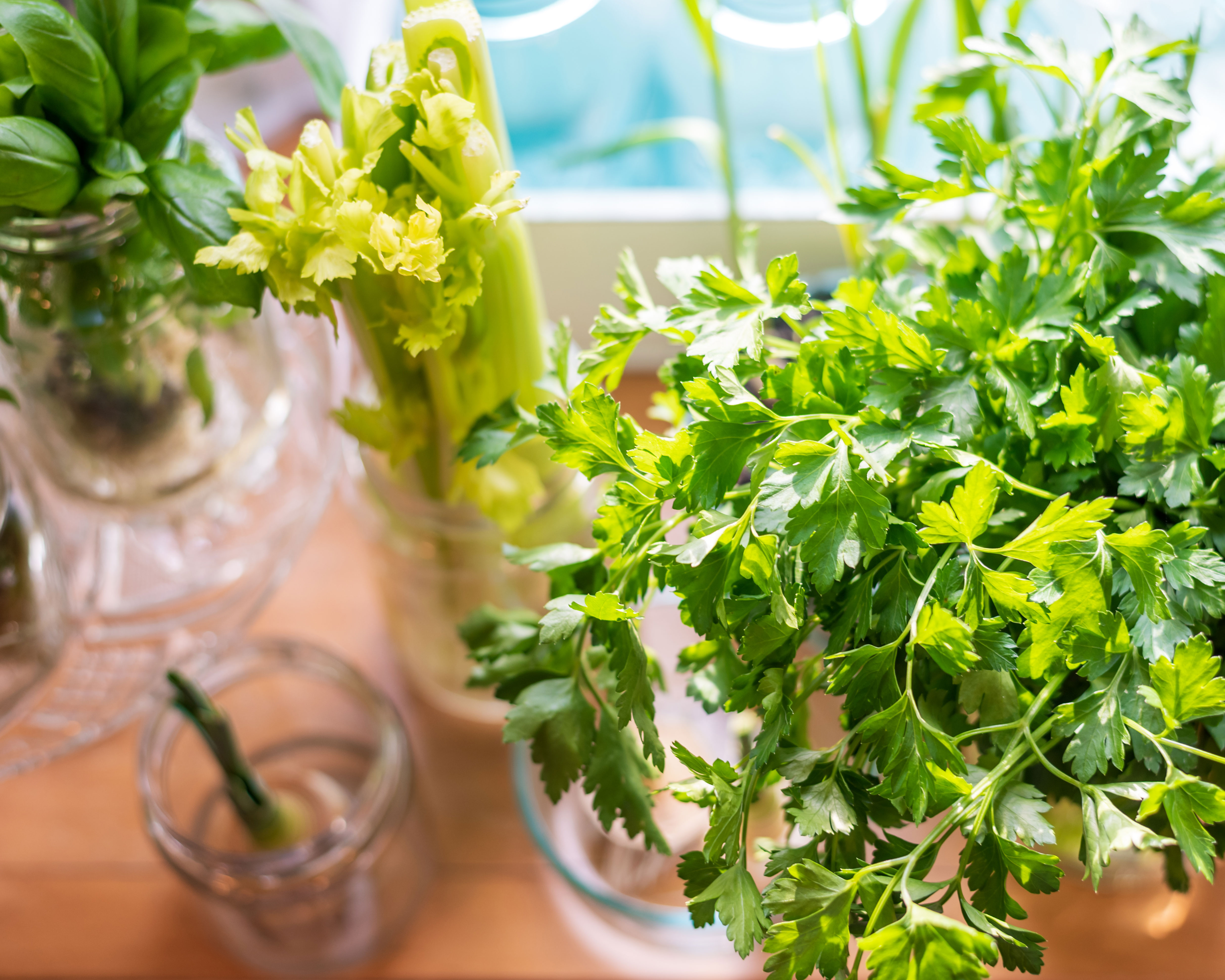
As a cool temperature plant, celery prefers to grow outdoors, but it is certainly possible to grow indoors if you don’t have any outdoor space.
CaliKim, YouTuber and author of Organic Gardening for Everyone advocates growing celery from store bought bunches indoors. ‘It literally just takes a few minutes to get it started,’ she says, adding that you can grow it all winter long, even when nothing else will grow outside.
Using the method explained above, she cuts the bottom few inches off a bunch of celery, and places it in a glass of water.
‘Within a few days you’re going to see leaves coming out the top and you will see roots coming out the bottom. And you’ve got yourself a little indoor celery plant. Just change the water every couple of days so that your celery doesn’t rot,’ she explains.
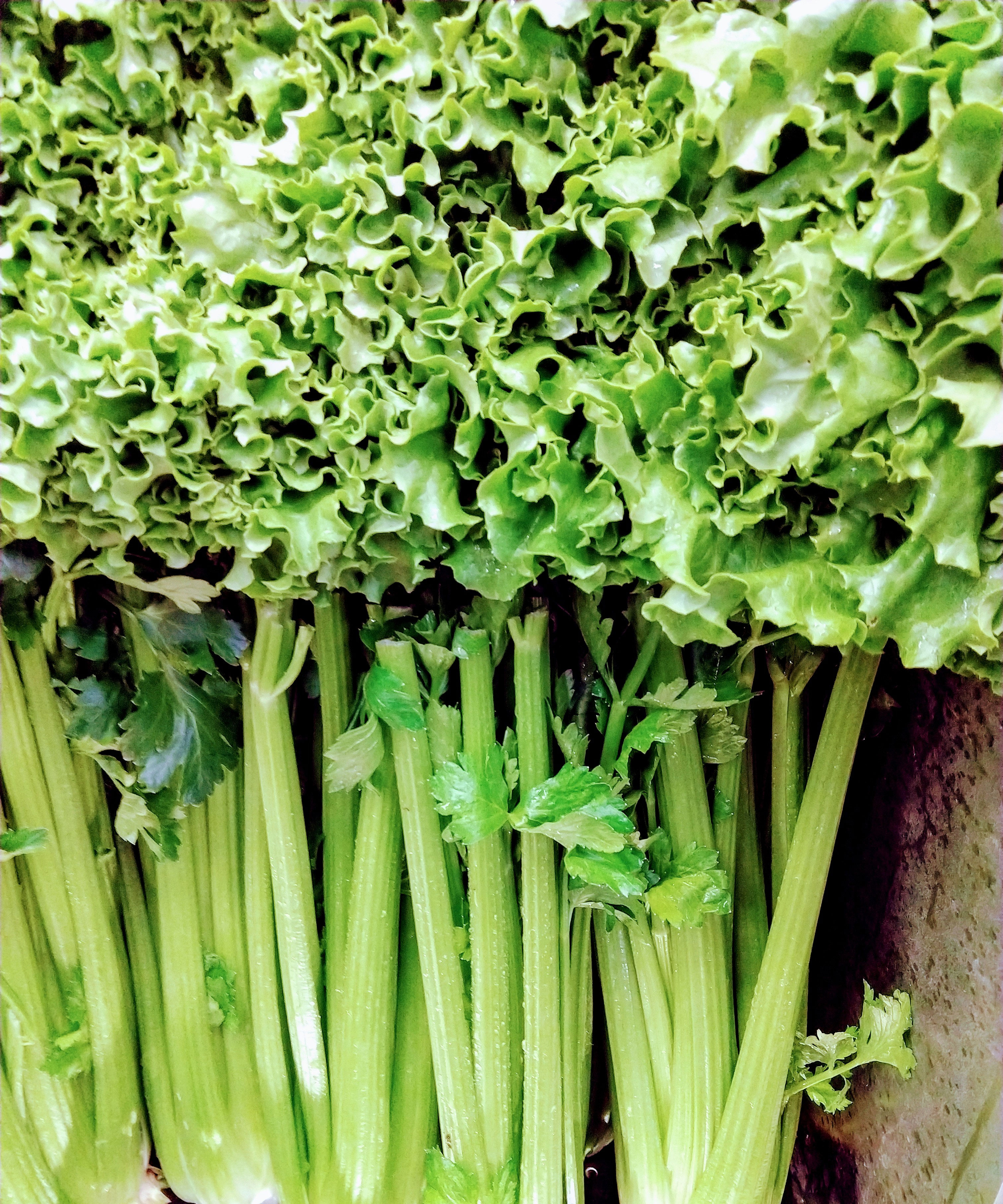
How long does it take celery to grow?
It takes around five to six months for celery to grow from seed to be ready to harvest. This will depend on the conditions under which it grows, but usually you will be harvesting from late summer through to early fall. Make sure you plant it with crops that are ready to harvest at different times when you're planning a kitchen garden so that you can enjoy a succession of crops through the year.
Celery is ready to harvest when the stalks are the desired size. You can either cut the whole clump off at ground level or harvest stalks individually when desired.
Celery grown from seed will take longer to mature than celery grown from an old celery plant, but from seed you have a better chance of getting thick, juicy stalks.
When grown from an old plant you may find that you only get thin, tough stalks, but these are still useful for cooking as they are very flavorsome.
What is the best way to grow celery?
The best way to grow celery is in very moist, rich soil, so add in plenty of organic matter, such as homemade compost. Plenty of sunlight will ensure even growth of the plant, and the more water you can give it the more tender the stems will be.
Because celery is a cold climate plant that enjoys lots of sun it’s best to grow it outdoors, in the ground or in pots, but you can also have success growing celery on a sunny windowsill.
'To improve the taste of celery stalks, try blanching them,' suggests Sam Corfield. 'This involves wrapping the stems with paper then tying it in place a few weeks before harvesting. This process of blocking out the light out makes the stems sweeter and not so bitter,' he adds.
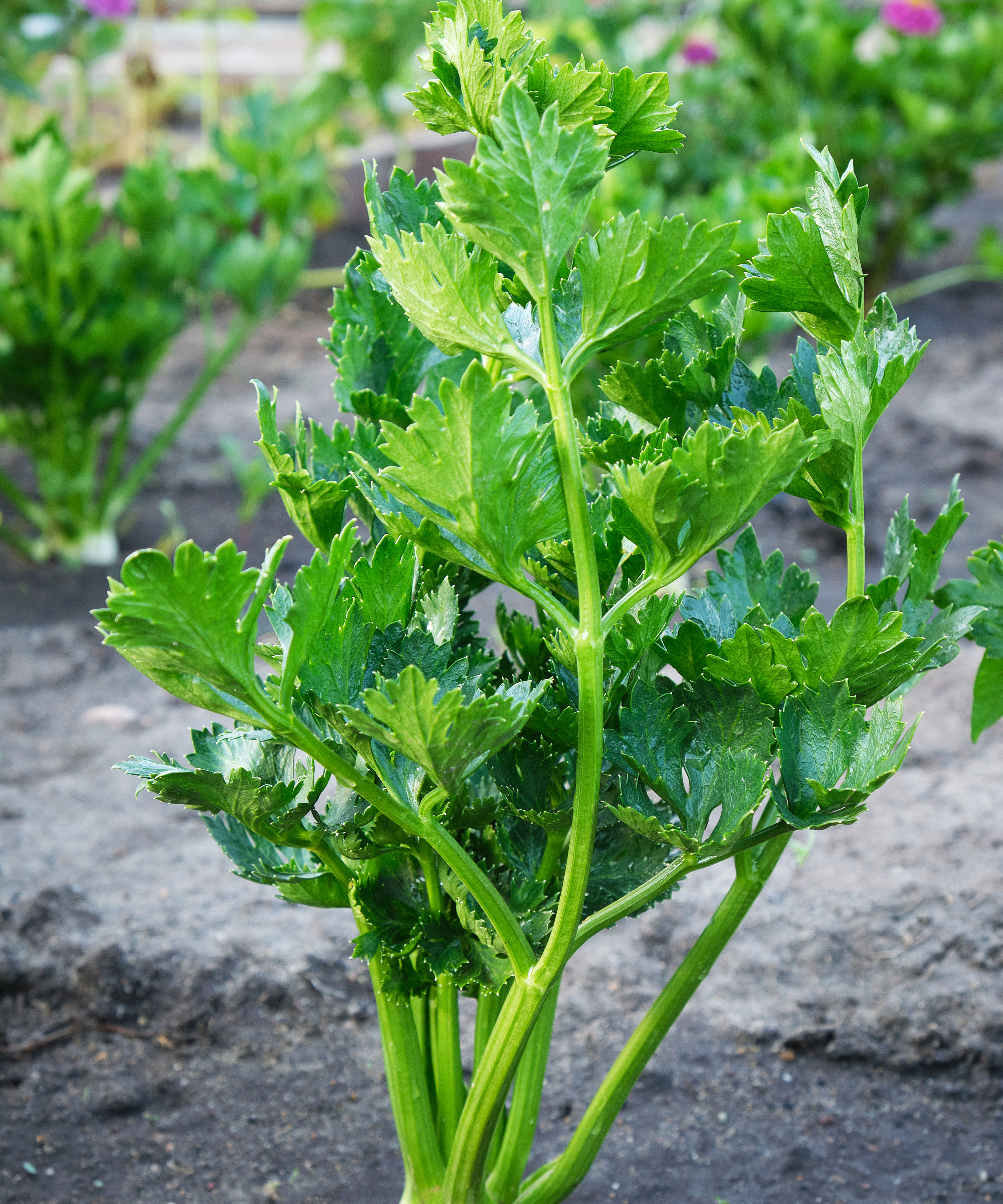
Is celery easy to grow?
Yes, celery is easy to grow. Providing it is not allowed to dry out it is easy to get a crop. What is a little more difficult is perfecting the sweet, tender stalks that we are used to from the grocery store, but by following the tips in this guide, you should be able to master tasty, juicy stems quite easily.
Because celery likes to grow in damp conditions, where fungal diseases can thrive, it can be prone to septoria – a fungal infection. To minimize chances of your crop getting septoria, ensure that your plants have enough space for air to flow around the stalks and they are not getting crowded by other plants.
When a mature plant is exposed to very high temperatures, it will bolt and go to seed. Once it does this the stems will become tough and chewy. Ensure that your celery plants do not get too hot and bolt by harvesting the stems before they bolt, or by sheltering them from the midday and afternoon sun. Ideally plant them along with other vegetables to grow in shade in a spot that enjoys no more than 6 hours of direct sunlight a day.
Sign up to the Homes & Gardens newsletter
Design expertise in your inbox – from inspiring decorating ideas and beautiful celebrity homes to practical gardening advice and shopping round-ups.

Becky is a freelance writer, blogger, and podcaster. Her blog, Sow Much More and her podcast The Seed Pod are aimed at making organic gardening more accessible and encourage others to grow their own food.
-
 How the 'ODT' method can help you to tackle your overwhelming decluttering checklist – and streamline the process from start to finish
How the 'ODT' method can help you to tackle your overwhelming decluttering checklist – and streamline the process from start to finishAvoid 'analysis paralysis' and tick off tasks quickly and easily by making just one decision at a time
By Ottilie Blackhall Published
-
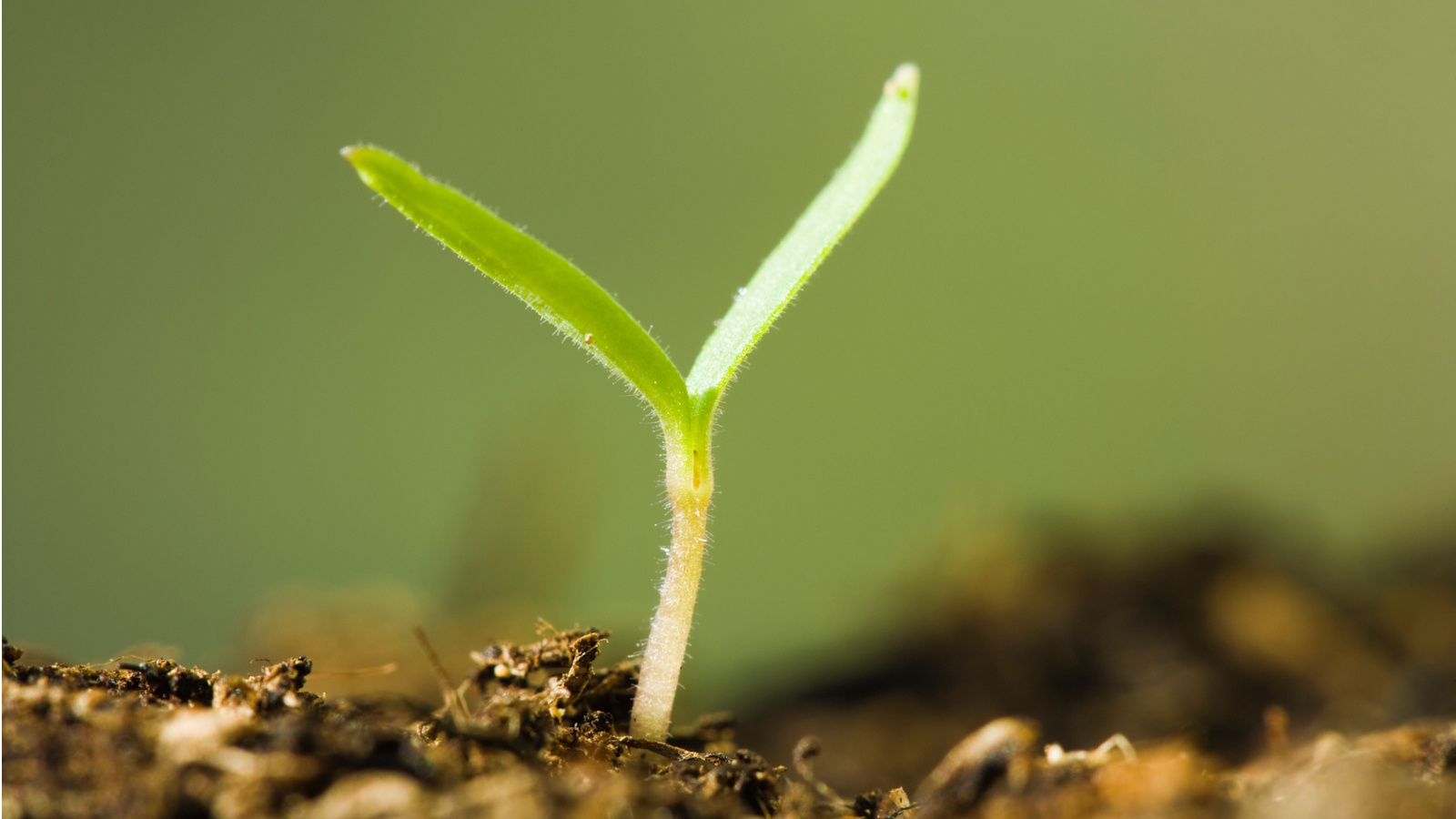 Experts say to only use homemade compost after testing it with this fail-safe method – they say it will guarantee healthy soil and support plant growth
Experts say to only use homemade compost after testing it with this fail-safe method – they say it will guarantee healthy soil and support plant growthSimply grab some fast-growing seeds and observe how they germinate in your compost
By Tenielle Jordison Published